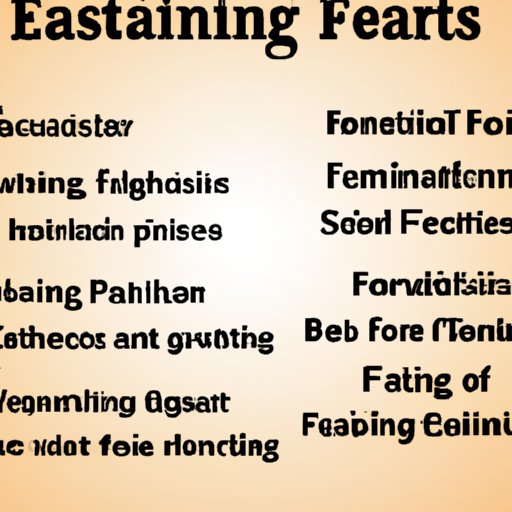
Introduction
When you hear the word “fasting,” you might think of religious practices or extreme dieting. But fasting has become increasingly popular as a wellness trend in recent years, with many people touting its benefits for weight loss, energy levels, and overall health. But just how long can you go without food, and what are the risks and benefits? In this article, we’ll explore the science behind fasting, different types of fasting, and tips for breaking a fast safely.
The Benefits and Risks of Fasting
First, let’s look at the potential benefits of fasting. One of the most commonly cited benefits is weight loss, as fasting can help reduce calorie intake and lead to fat burning. Fasting has also been linked to improved energy levels, as fasting promotes the production of hormones that increase alertness and focus.
But beyond weight loss and energy, fasting may have other health benefits as well. Some studies have suggested that fasting may lower the risk of diabetes and heart disease by improving insulin sensitivity and reducing inflammation. However, more research is needed to fully understand the health benefits of fasting.
On the other hand, there are also some risks associated with fasting. One potential risk is nutrient deficiencies, as fasting can lead to a lack of important vitamins and minerals. Dehydration is another risk of prolonged fasting, as the body relies on water from food for hydration. Additionally, some people may experience negative effects on their mental health, such as irritability or anxiety, during periods of fasting.
The Science Behind Fasting
Now, let’s delve into the science behind fasting. When you stop eating, your body goes into “fasting mode.” First, the body will use glucose and glycogen stored in the liver as energy. Once those sources are depleted, the body will switch to using fat stores for energy. This is why fasting can lead to weight loss and fat burning.
As fasting progresses, the body may enter a state called ketosis, which is when the body starts using ketones for energy instead of glucose. Ketosis has been linked to a number of health benefits, including reduced inflammation and improved insulin sensitivity.
It’s important to note that there are differences between short-term fasting (such as intermittent fasting) and prolonged fasting (such as extended water fasting). Short-term fasting tends to have fewer risks and can be easier to manage, while prolonged fasting requires careful monitoring and medical supervision.
Different Types of Fasting
There are several different types of fasting, each with its own pros and cons. Intermittent fasting involves alternating periods of fasting (usually 16-24 hours) with periods of eating. This can be an effective way to manage weight and improve insulin sensitivity, but may not be sustainable as a long-term lifestyle.
Water fasting involves consuming only water for an extended period of time (usually several days or more). This can lead to rapid weight loss and may have health benefits such as improved autophagy (a cellular process that helps remove damaged cells). However, water fasting should only be done under medical supervision and can be risky for those with certain medical conditions.
Juice fasting involves consuming only fruit and vegetable juices for a period of time. This may help promote weight loss and nutrient intake while still allowing the body to enter a state of fasting. However, juice fasts can be high in sugar and may lead to nutrient imbalances if done for an extended period of time.
Tips for Breaking a Fast
Breaking a fast safely is just as important as the fast itself. When you start eating again, it’s important to introduce food slowly and gradually to avoid digestive upset. Start with small portions of easily digestible foods like soups or fruits and vegetables, and gradually add in more complex meals.
It’s also important to stay hydrated during and after a fast. Drink plenty of water and electrolyte-rich fluids to replenish your body’s stores.
The Spiritual Aspects of Fasting
Finally, it’s worth noting the connection between fasting and religion. Fasting is a common practice in many religions, including Islam, Christianity, and Judaism. In addition to its physical benefits, some people fast for spiritual or emotional reasons as well. Fasting can be a way to cultivate mindfulness and gratitude, or to connect with a higher power.
Conclusion
In conclusion, fasting can be an effective tool for weight loss and may have other health benefits as well. However, it’s important to approach fasting with caution and to understand the potential risks and benefits. Different types of fasting may work better for different people, so it’s important to find what works best for your body and lifestyle. And when breaking a fast, take it slow and listen to your body’s needs.




